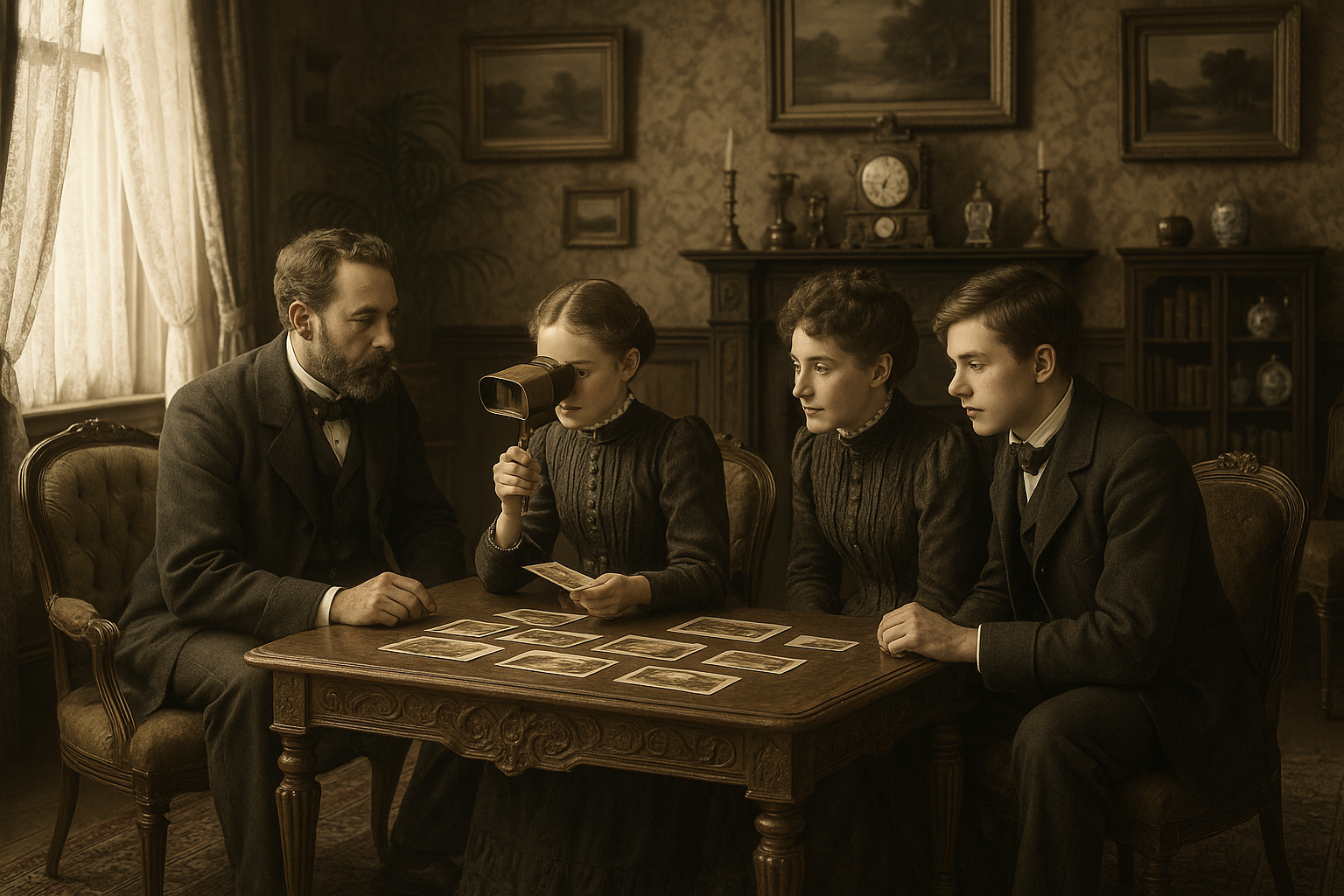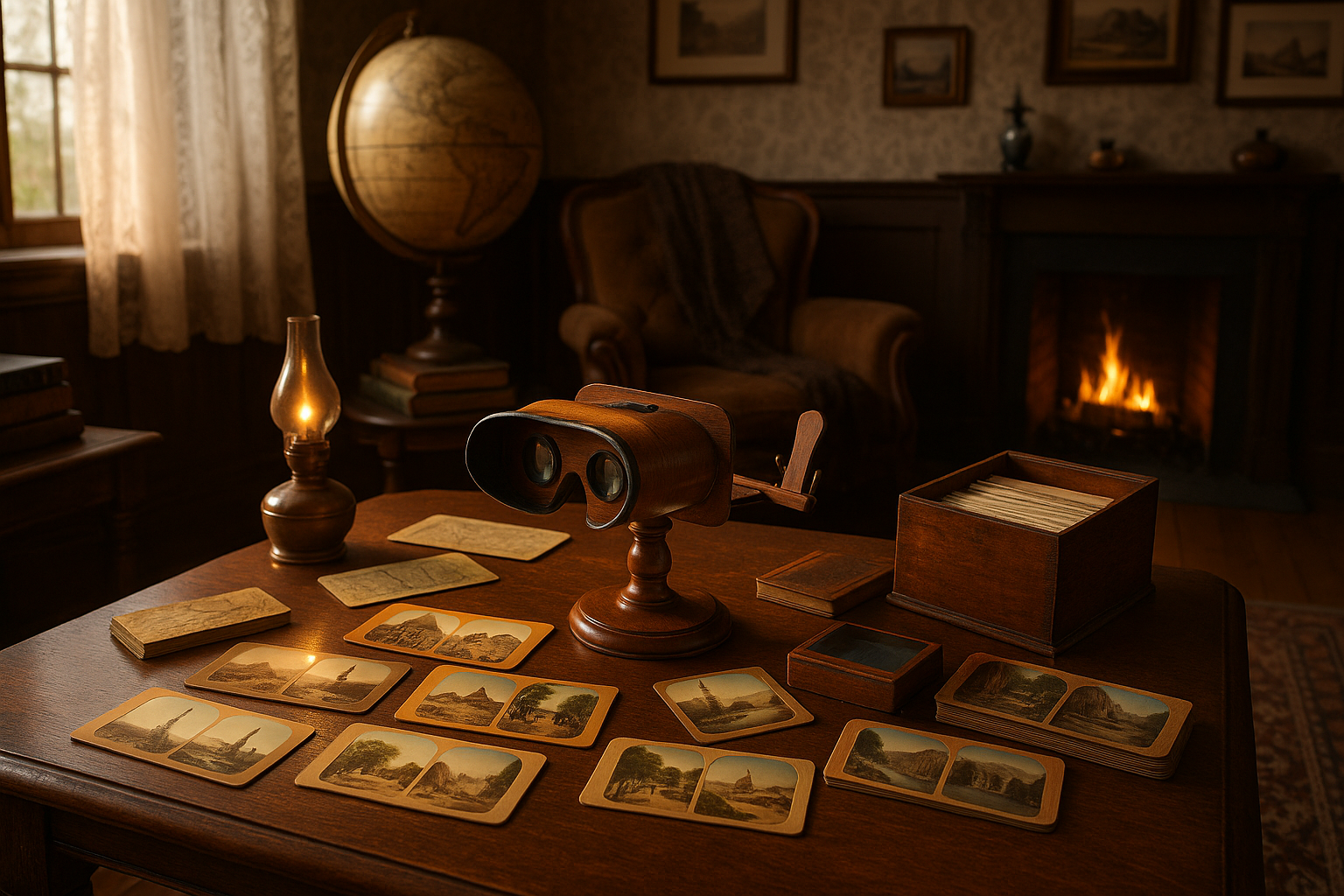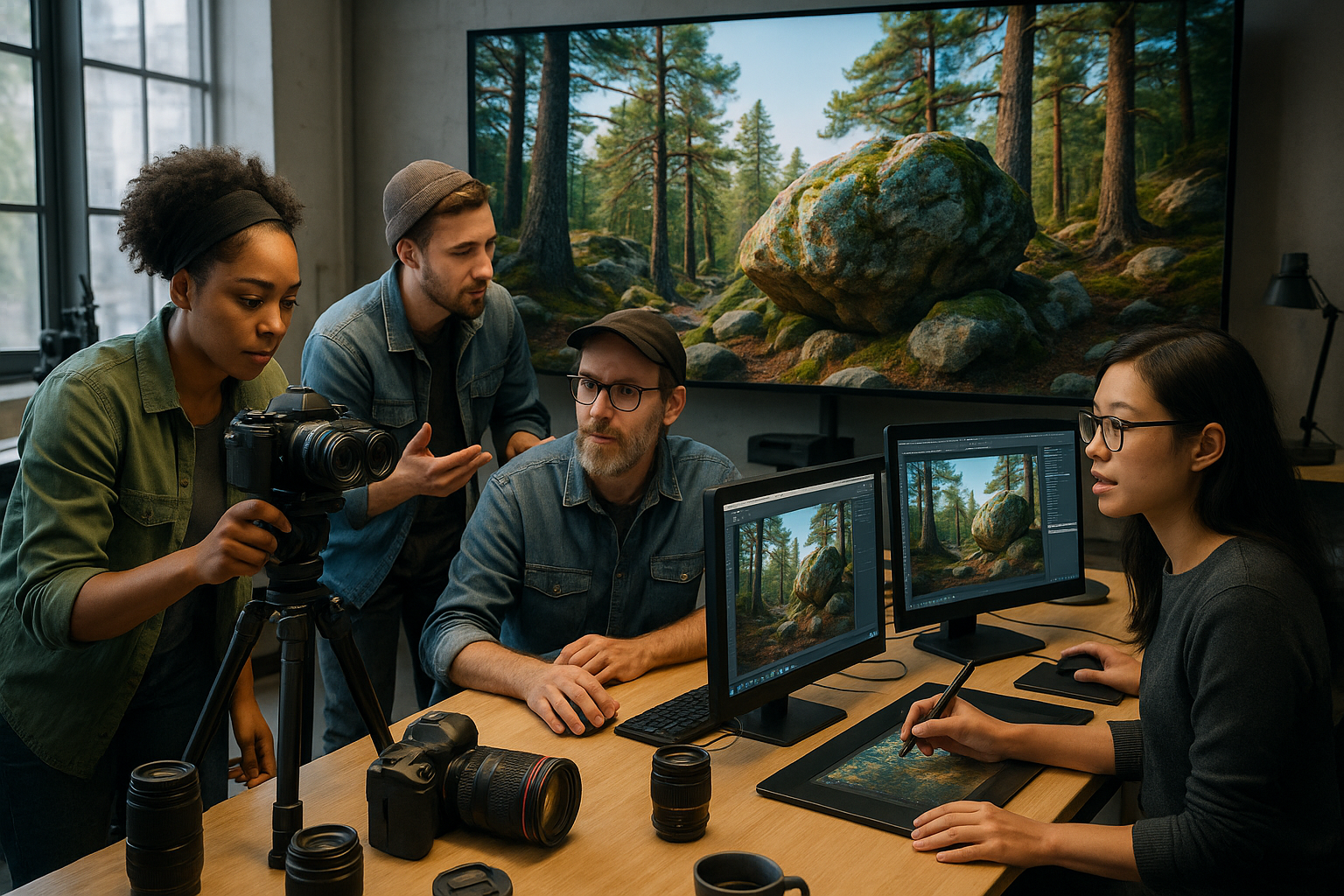Imagine stepping back in time, not just through words in a history book, but by immersing yourself in a three-dimensional visual journey that brings the past to life. This is the captivating promise of educational stereographs, a powerful tool that once transformed learning experiences in classrooms across the world. In our digital age, where technology continually reshapes educational landscapes, revisiting these historical artifacts offers a fascinating glimpse into how educators of the past harnessed the cutting-edge technology of their time to engage and inspire students. 📚✨
Educational stereographs, first popularized in the late 19th and early 20th centuries, provided viewers with a unique 3D perspective, using paired images and a stereoscope to create a single, cohesive scene. These images captured everything from daily life and exotic landscapes to significant historical events, offering an immersive window into worlds that many could only dream of exploring. As we delve into the world of stereographs, we’ll explore not only their historical significance and educational value but also their potential resurgence in today’s classrooms, where virtual and augmented realities are becoming increasingly prevalent.
In this comprehensive exploration, we will journey through the origins of stereographs, examining how these remarkable tools were developed and popularized. We’ll discuss their impact on education at the time, how they engaged students, and the pedagogical strategies they inspired. Moreover, we’ll draw parallels to modern educational technologies, considering how stereographs paved the way for today’s interactive and multimedia learning experiences. By understanding the evolution of these tools, we gain insights into the timeless quest for more engaging and effective educational methods.
As we step into this fascinating intersection of history, technology, and education, we invite you to rediscover the magic of stereographs and reflect on the enduring quest to make learning an exciting and transformative journey. Whether you are an educator, a history enthusiast, or simply curious about the evolution of educational tools, this exploration promises to enlighten and inspire, shedding light on how the past continues to inform and enrich our present-day educational practices. 🌍📖
Understanding the Historical Context of Stereographs
Stereographs emerged as a revolutionary form of entertainment and education in the 19th century. These double-image photographs, when viewed through a stereoscope, create a three-dimensional effect that was groundbreaking for its time. The invention of stereographs is often credited to Sir Charles Wheatstone in 1838, who first demonstrated the concept of binocular vision. He showcased how two slightly different images, one for each eye, could create a perception of depth.
The popularity of stereographs skyrocketed in the mid-1800s, especially with the improvement of photographic processes. They became a household staple, providing people with glimpses of faraway lands, historical events, and even microscopic views of the natural world. This fascination wasn’t just confined to the realm of entertainment; educators quickly realized the potential of stereographs as a powerful tool for teaching geography, science, and history.
Incorporating stereographs into educational settings offered students a vivid, immersive experience. Rather than merely reading about the pyramids of Egypt or the battlefields of the American Civil War, students could visualize these scenes in lifelike detail. This method of learning by seeing was transformative, as it provided a richer understanding and retention of information. It was a precursor to modern-day virtual reality, offering an early form of immersive education that many students and teachers found invaluable.
The Rise of Stereographs in Education
As the demand for educational materials increased, publishers and photographers began producing stereographs specifically tailored for schools. These educational stereographs covered a wide range of subjects, from botanical studies to historical reenactments. Publishers like Underwood & Underwood and Keystone View Company became leaders in this niche market, creating comprehensive stereograph sets that schools could purchase for educational purposes.
These stereograph sets were often accompanied by descriptive texts or booklets, providing detailed explanations of each image. This combination of visual and textual information helped reinforce learning, making complex subjects more accessible to students. Teachers could use stereographs to spark discussions, illustrate lessons, and engage students in a way that traditional textbooks could not.
By the early 20th century, educational stereographs had become an integral part of many school curriculums. They were used in a variety of subjects, including geography, history, and science. For instance, a stereograph of a glacier could be used in a geography class to discuss glacial formations, while a stereograph of a historical event could serve as a starting point for a history lesson. This innovative approach to education laid the groundwork for future advancements in educational technology.
Technological Advances and the Evolution of Stereographs
With the advent of new technologies, the production and quality of stereographs improved significantly. The introduction of glass plate negatives allowed for clearer, more detailed images, enhancing the overall viewing experience. Furthermore, advancements in stereoscope design made the devices more accessible and user-friendly, contributing to the widespread adoption of stereographs in educational and domestic settings.
In the early 1900s, the development of the Keystone Telebinocular marked a significant leap forward. This new type of stereoscope offered a larger, more immersive field of view, making it an ideal tool for both education and entertainment. Keystone View Company capitalized on this innovation by producing a vast library of educational stereographs, which they marketed to schools, libraries, and individual collectors.
The increasing availability of stereographs coincided with a broader societal shift towards visual culture. As photography became more prevalent, people began to value visual representations of information more highly. Stereographs fit neatly into this trend, providing a unique and engaging way to experience the world. This shift in cultural values helped cement the role of stereographs in education, as they provided a visually appealing and informative complement to traditional teaching methods.
Comparing Stereographs with Modern 3D Learning Tools
| Aspect | Stereographs | Modern VR/AR |
|---|---|---|
| Technology | Analog, uses physical images and a stereoscope | Digital, uses software and headsets/devices |
| Interactivity | Limited to viewing static images | Highly interactive, users can manipulate and explore environments |
| Content Variety | Predetermined subjects, mainly historical and geographical | Wide range of subjects, including interactive simulations |
| Accessibility | Requires physical stereoscopes and images | Requires digital devices and sometimes costly equipment |
While stereographs offered a limited form of interactivity, modern VR and AR technologies provide dynamic, customizable experiences. For instance, VR can simulate historical events, allowing students to “participate” in them, rather than simply viewing them as static images. Similarly, AR can overlay digital information onto real-world settings, enhancing the learning environment in real-time.
Practical Applications of Educational Stereographs Today
Although modern technology has largely supplanted traditional stereographs, they still hold significant educational value, particularly in the fields of history and cultural studies. Many museums and educational institutions use stereographs to offer visitors a glimpse into the past, providing a tangible connection to historical events and cultures.
For history enthusiasts and educators, stereographs serve as a valuable primary source, offering authentic representations of historical moments. They can be used in classrooms to supplement textbooks, providing students with a more nuanced understanding of historical contexts. By examining stereographs, students can gain insights into the social, political, and cultural aspects of different time periods, fostering a deeper appreciation for history.
Moreover, the aesthetic and historical value of stereographs has led to a resurgence of interest among collectors and educators alike. Many people are drawn to the unique perspective that stereographs offer, viewing them as an art form in their own right. As a result, educational workshops and exhibitions dedicated to stereographs are becoming increasingly popular, attracting diverse audiences eager to explore this fascinating medium.
Engaging with Stereographs in Modern Education
Incorporating stereographs into contemporary education can be an effective way to engage students and encourage critical thinking. By analyzing stereographs, students can develop observational skills, interpret historical evidence, and draw connections between past and present. Educators can facilitate discussions around the significance of certain images, prompting students to consider the broader implications of historical events and societal changes.
To effectively integrate stereographs into the classroom, teachers can utilize a variety of teaching strategies. For example, they can create assignments that require students to research the context of a particular stereograph, encouraging them to explore historical sources and analyze visual information. Additionally, educators can organize group projects where students curate their own stereograph exhibitions, fostering collaboration and creativity.
For those interested in exploring stereographs further, the YouTube video “The World in 3D: A Journey Through Stereographs” by the channel History Uncovered provides an insightful overview of the history and impact of stereographs. Watch the video here to gain a deeper understanding of how this fascinating medium has shaped our perception of the past.
- Explore historical events through stereographs to enhance understanding.
- Utilize stereographs in classroom discussions to promote critical thinking.
- Encourage students to research and present their findings on stereographs.

Conclusion
In conclusion, the exploration of educational stereographs as a tool for a 3D learning experience offers a captivating journey through history, enriching both educators and learners in profound ways. As we have discussed, stereographs provide a unique window into the past, allowing users to engage with historical moments in a manner that transcends traditional learning methods. The immersive nature of these images not only captivates the viewer’s attention but also enhances retention and comprehension of historical events and contexts.
Throughout this article, we explored how stereographs can be integrated into educational settings to create a more dynamic and interactive learning experience. By engaging with these historical images, students can develop a deeper understanding of various cultures, events, and periods, fostering critical thinking and empathy. The tactile and visual elements of stereographs make history tangible, transforming it from a distant narrative into a lived experience.
Moreover, the versatility of stereographs as educational tools cannot be overstated. They can be employed across a range of subjects, from history and social studies to art and geography, offering endless possibilities for creative lesson planning. Teachers can craft lessons that not only inform but inspire curiosity and exploration, encouraging students to delve deeper into the subjects they study.
The enduring relevance of stereographs in modern education highlights the importance of utilizing diverse resources to engage students. As technology continues to evolve, incorporating historical methods like stereographs with modern tools can create a rich, hybrid educational environment that caters to various learning styles. This approach ensures that history is not just memorized but experienced, leading to a more profound appreciation and understanding of our shared past.
In light of the myriad benefits discussed, it is crucial to advocate for the inclusion of stereographs in educational curriculums and museums. By doing so, we can preserve this valuable historical resource and continue to inspire future generations. Educators, historians, and technology enthusiasts alike can contribute to this endeavor by sharing their experiences and insights on platforms dedicated to educational advancements.
We encourage you, dear reader, to reflect on the ways you can integrate these fascinating tools into your learning or teaching practices. Whether you are an educator looking to enrich your classroom or a lifelong learner eager to expand your horizons, stereographs offer a unique opportunity to step into history and experience it in a new dimension. 🌍
Feel free to share this article with your peers and colleagues who might benefit from this innovative approach to learning. By spreading the word, you contribute to a broader appreciation and utilization of stereographs, ensuring their continued relevance in education. Additionally, we welcome your thoughts and experiences in the comments section. Have you used stereographs in your teaching or learning journey? What impact did they have? Your insights could inspire others to embrace this fascinating educational tool.
As we conclude this exploration of educational stereographs, let us remember the words of renowned historian Carl Becker: “History is the memory of things said and done.” By preserving and utilizing tools like stereographs, we ensure that these memories are not just preserved but brought to life for generations to come. Let us step into history together and unlock the potential of 3D learning experiences.
For further reading and resources on the use of stereographs in education, please refer to reputable sources such as the Library of Congress or the National Stereoscopic Association. These platforms offer extensive collections and insights into the world of stereography, providing a valuable foundation for educators and enthusiasts alike.
Thank you for joining us on this journey. We hope you find inspiration and utility in the world of educational stereographs, and we look forward to seeing how you will bring history to life in your own unique way.
Toni Santos is a visual historian and artisan whose creative lens is captivated by the forgotten marvels of antique optical devices. Through his thoughtful storytelling, Toni revives the instruments that once transformed light into wonder—camera obscuras, magic lanterns, kaleidoscopes, and other ingenious tools that shaped our earliest visual imaginations.
His journey is rooted in a fascination with how humans have long sought to bend, reflect, and reveal the unseen. Whether tracing the mechanical poetry of 19th-century projectors or illustrating the tactile elegance of early lenses, Toni’s work invites us to see vision itself as an evolving art form.
Blending handcrafted design with historical inquiry, Toni brings to life the material soul of these devices—celebrating not just how they functioned, but what they meant. His creations and curated stories illuminate a world where science, illusion, and beauty were intricately linked through glass and brass.
As the curator of Vizovex, Toni shares detailed studies, reconstructed artifacts, and immersive content that help others rediscover the origins of visual technology and the magic of analog perception.
His work is a tribute to:
The craftsmanship behind early visual instruments
The wonder of seeing through the eyes of another century
The intersection of optics, art, and imagination
Whether you’re a collector, a designer, or someone drawn to the lost poetry of vision, Toni welcomes you into a world where light is a storyteller—one prism, one lens, one forgotten invention at a time.





